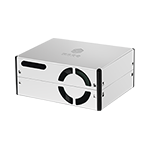Most of the time, it requires to know about the particle density in the environment. It is important to come with right kind of things that are certainly influence the public health. Needless to mention, there are a number of micro airborne particles are floating around us and they need proper monitoring to lessen their effect on health. Particle sensor delivers outstanding result that is truly making something more crucial with the help of right kind of things. They mainly make a great contribution on your way to get all these data accurately.
How do particle sensors work?A
sensor and a beam of light sit at an angle to each other. As a particle passes
in front of the light, some light is reflected towards the sensor. The sensor
registers a pulse for as long as the particle reflects light to the sensor. If
the air is moving at a consistent speed, the length of this pulse can be used
to estimate the particle’s diameter. That beam of light plays the crucial role
to get the perfect result. Unlike CO2 meter,
there is no need any type of filament that is making a great contribution on
your way to get the result.
With
an estimate of particle diameter and an estimate of average particle density,
airborne concentrations of PM can be extrapolated. These estimates are somewhat
imperfect, as accounting for particle density and the estimating and accounting
for the quantity of water in droplet mode particles is not straightforward.
Both of these issues complicate the process of correlating optical PM
measurements to regulatory monitoring.
Humidity
measurements are also frequently used to correct for the expected efforts of
humidity on the droplets. They corrections are just based on the assumptions
about the percentage of dust that is in a droplet mode and susceptible to
wetting along with the percentage with the dust.

No comments:
Post a Comment